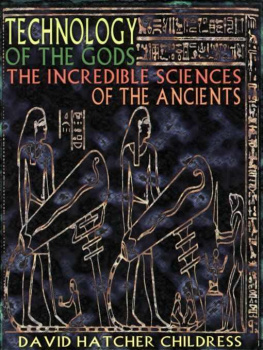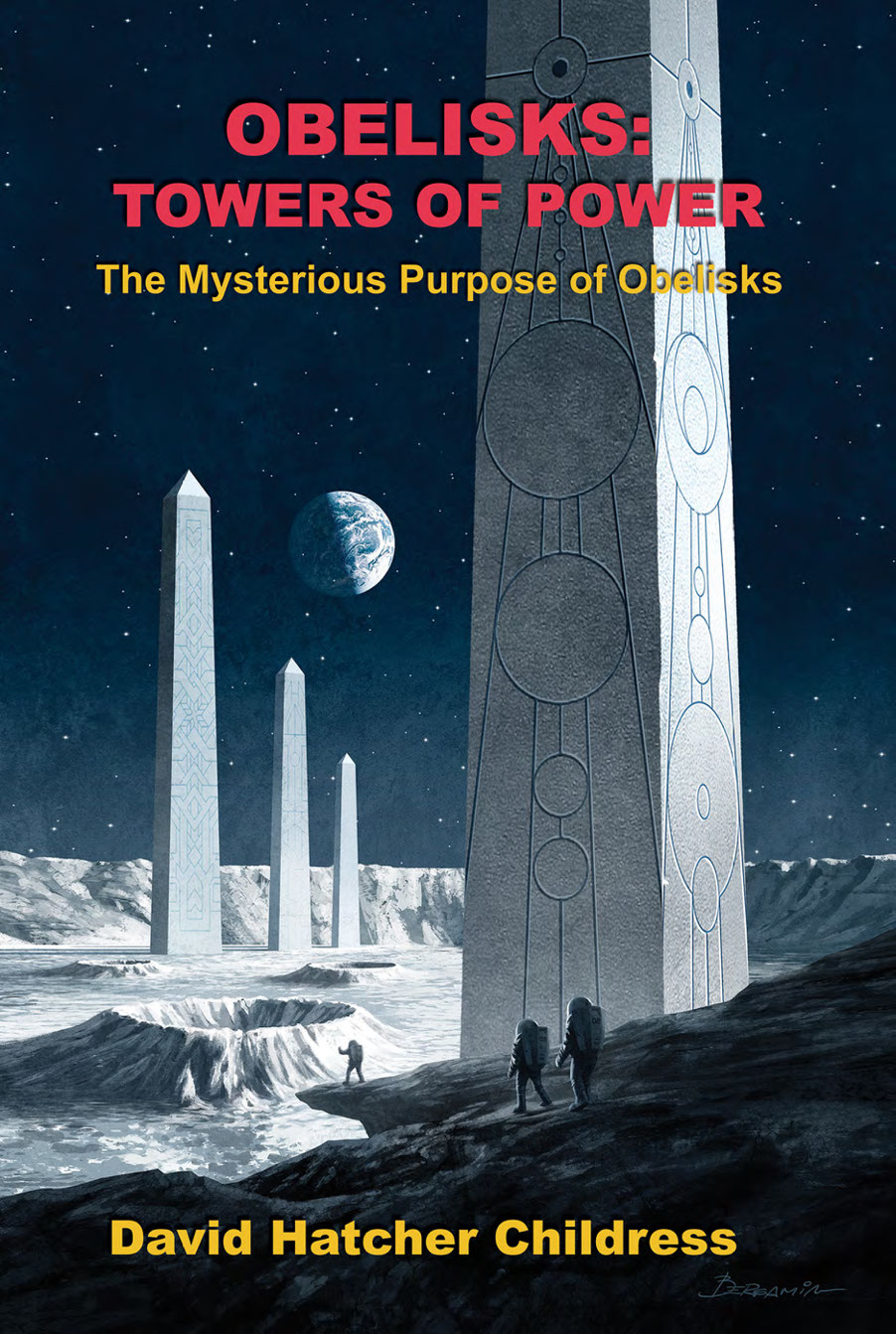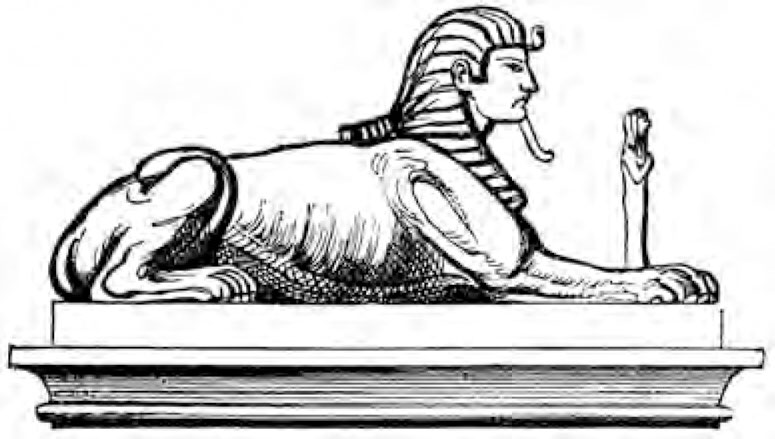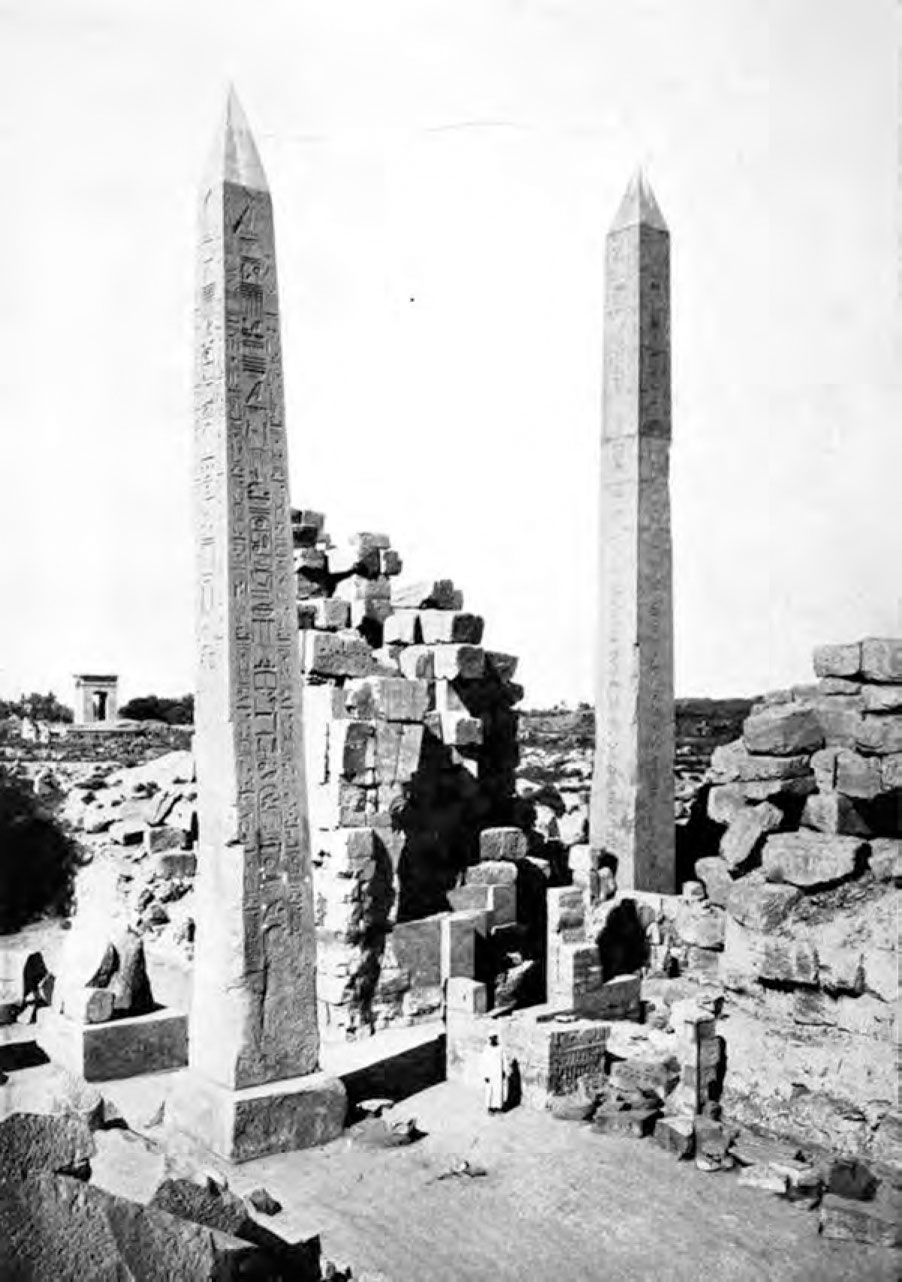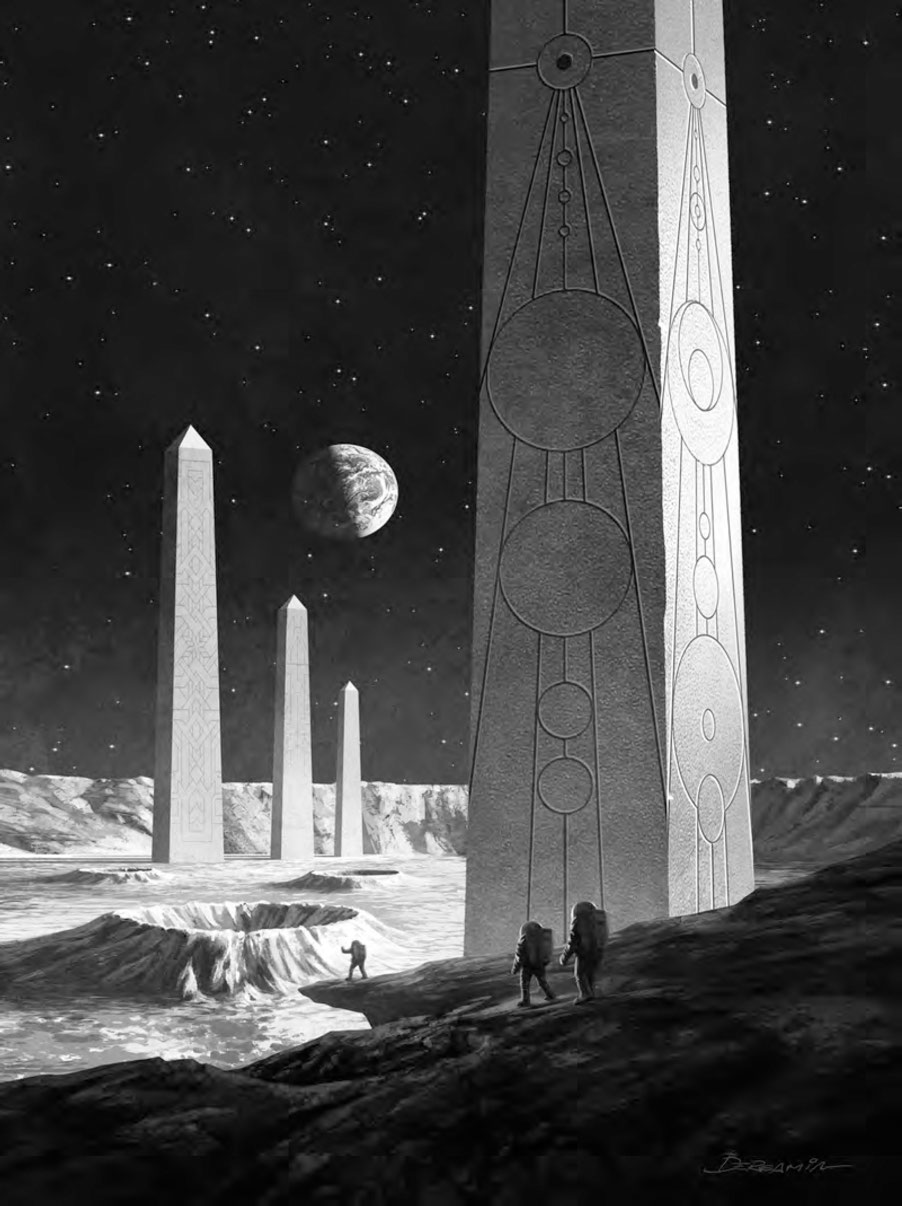OBELISKS
TOWERS OF POWER
David Hatcher Childress
Other Books by David Hatcher Childress:
VIMANA
ARK OF GOD
ANCIENT TECHNOLOGY IN PERU & BOLIVIA
THE MYSTERY OF THE OLMECS
PIRATES AND THE LOST TEMPLAR FLEET
TECHNOLOGY OF THE GODS
A HITCHHIKERS GUIDE TO ARMAGEDDON
LOST CONTINENTS & THE HOLLOW EARTH
ATLANTIS & THE POWER SYSTEM OF THE GODS
THE FANTASTIC INVENTIONS OF NIKOLA TESLA
LOST CITIES OF NORTH & CENTRAL AMERICA
LOST CITIES OF CHINA, CENTRAL ASIA & INDIA
LOST CITIES & ANCIENT MYSTERIES OF AFRICA & ARABIA
LOST CITIES & ANCIENT MYSTERIES OF SOUTH AMERICA
LOST CITIES OF ANCIENT LEMURIA & THE PACIFIC
LOST CITIES OF ATLANTIS, ANCIENT EUROPE & THE MEDITERRANEAN
LOST CITIES & ANCIENT MYSTERIES OF THE SOUTHWEST
YETIS, SASQUATCH AND HAIRY GIANTS
With Brien Foerster
THE ENIGMA OF CRANIAL DEFORMATION
With Steven Mehler
THE CRYSTAL SKULLS
OBELISKS
TOWERS OF POWER
Obelisks: Towers of Power
Copyright 2019
by David Hatcher Childress
ISBN 978-1-948803-05-2
All Rights Reserved
Published by:
Adventures Unlimited Press
One Adventure Place
Kempton, Illinois 60946 USA
auphq@frontiernet.net
AdventuresUnlimitedPress.com
10 9 8 7 6 5 4 3 2 1
Two obelisks, still standing in the ruins of Karnak Temple in Luxor, Egypt in the 1920s. Most of the well-built temple was in ruins but the obelisks were still standing. Indeed, they must have been there before the Temple of Karnak was built many thousands of years ago. How the obelisks were erected is still a mystery.
OBELISKS
TOWERS OF POWER
The Great Seal of the United States with the Great Pyramid and a pyramidion with an eye at its center. What ancient power once projected from the Great Pyramid and the obelisks? This symbol is on the obverse side of the one dollar bill and is part of our everyday lives.
TABLE OF CONTENTS
Cleopatras Needle at Alexandria, Egypt in 1880.
Chapter 1
The Mysterious Obelisk and the Pyramidion
Research is a straight line from the tangent of a well-known assumption to
the center of a foregone conclusion.
Nevilles Conclusion
For many years I have been fascinated by obelisks and I have included the subject in many of my presentations at conferences around the world. As a collector of books (and other things) I have probably every book on obelisks ever published in English. And that is not very many booksonly about sixand they dont have much to say about the reason for the existence of the large monolithic obelisks that were created thousands of years ago. The date of the creation and erection of many obelisks is of some considerable doubt as we shall see as this book progresses.
What will be clear is that obelisks are among the largest and most mysterious of all quarried stone in ancient times. We do not know how many obelisks were quarried or erected in antiquity. We do not know how widespread the erection of obelisks was, nor where the practice originated. We do not know how the largest obelisks were erected and we do not know what function the ancients believed that obelisks served.
Basically, what were obelisks, an engineering feat of Herculean proportions, for? What purpose did they serve? Were they simple monuments to a ray of the sun? Was there some energy that was believed to be transposed and channeled through these gigantic needles of granite? Granite contains tiny resonating quartz crystals infused in the rock structure. Does this matter to the purpose of the obelisk? Are obelisks essentially energy towers of some sort? The answer would seem to beyes.
First let us discuss some of the early books on obelisks, what few there are, and the standard definitions of the important terms obelisk and pyramidion.
What is an Obelisk?
First of all, let us review the basics of what an obelisk is and how it is defined in the old scientific community. The Encyclopedia Britannica defines an obelisk as a:
tapered monolithic pillar, originally erected in pairs at the entrances of ancient Egyptian temples. The Egyptian obelisk was carved from a single piece of stone, usually red granite from the quarries at Aswan. It was designed to be wider at its square or rectangular base than at its pyramidal top, which was often covered with an alloy of gold and silver called electrum. All four sides of the obelisks shaft are embellished with hieroglyphs that characteristically include religious dedications, usually to the sun god, and commemorations of the rulers. While obelisks are known to have been erected as early as the 4th dynasty (c. 25752465 bce), no examples from that era have survived. Obelisks of the 5th dynastys sun temples were comparatively squat (no more than 10 feet [3.3 meters] tall). The earliest surviving obelisk dates from the reign of Sesostris I (19181875 bce) and stands at Heliopolis, a suburb of Cairo, where once stood a temple to Re. One of a pair of obelisks erected at Karnak by Thutmose I (c. 1493c. 1482 bce) is 80 feet (24 meters) high, square at the base, with sides of 6 feet (1.8 meters), and 143 tons in weight.
An inscription on the base of Hatshepsuts 97-foot (30-meter) standing obelisk at Karnak indicates that the work of cutting that particular monolith out of the quarry took seven months. In the Temple of Hatshepsut at Thebes are scenes of the transport of the obelisk down the Nile by barge. At its destination workmen put the shaft into place upon its detached base by hauling it up a ramp made of earth and tilting it.
Other peoples, including the Phoenicians and the Canaanites, produced obelisks after Egyptian models, although not generally carved from a single block of stone.
During the time of the Roman emperors, many obelisks were transported from Egypt to what is now Italy. At least a dozen went to the city of Rome itself, including one now in the Piazza San Giovanni in Laterano that was originally erected by Thutmose III (reigned 14791426 bce) at Karnak. With a height of 105 feet (32 meters) and a square base with sides of 9 feet (2.7 meters) that tapers to a square top with sides of 6 feet 2 inches (1.88 meters), it weighs approximately 230 tons and is the largest ancient obelisk extant.











